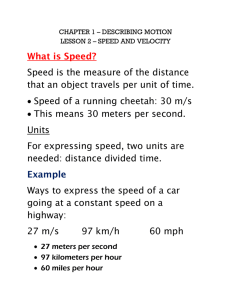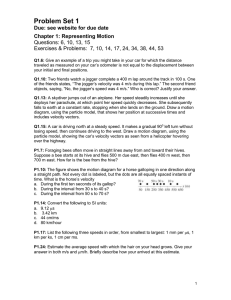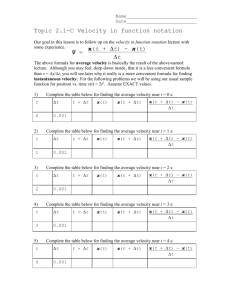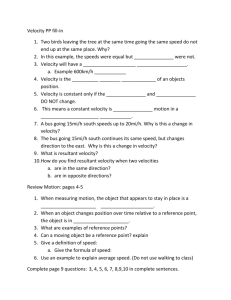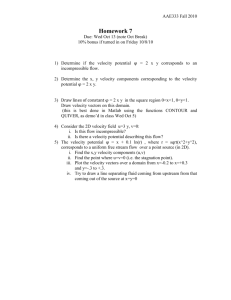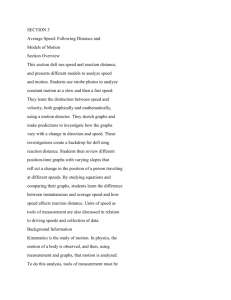Speed & Velocity
advertisement
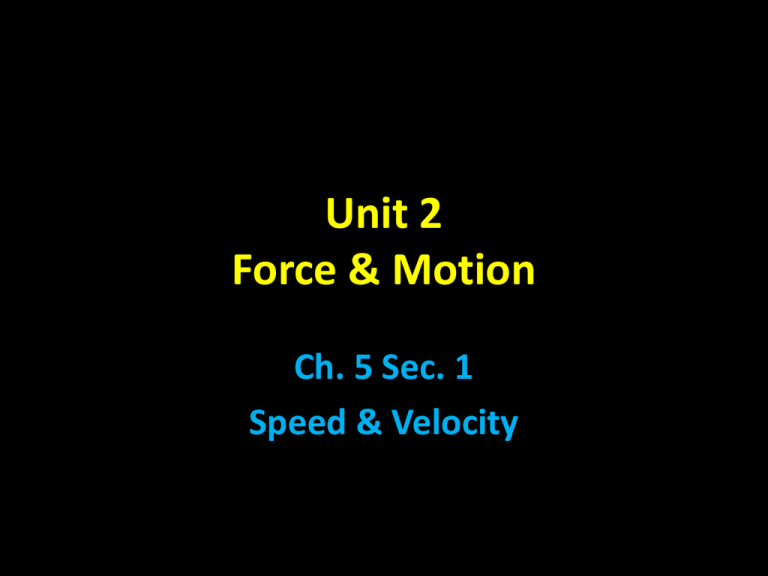
Unit 2 Force & Motion Ch. 5 Sec. 1 Speed & Velocity Speed Motion involves distance, direction, & speed… • speed - distance traveled divided by time – standard unit: meters per second (m/s) s𝑝𝑒𝑒𝑑 = 𝑑𝑖𝑠𝑡𝑎𝑛𝑐𝑒 𝑡𝑖𝑚𝑒 OR s= 𝑑 𝑡 Speed is often not constant, thus there is both average speed and instantaneous speed… Average Speed - determined by dividing total distance by total time Instantaneous Speed - the speed at any given moment Representing Motion • distance-time graph distance is plotted on the yaxis (vertical) & time is on the x-axis (horizontal) • can be used to compare the speeds of objects • the slope or steepness of the line indicates the speed (steeper = faster) • a horizontal line on a distance-time graph means speed is zero Velocity • velocity - the speed AND direction of an object • velocity has the same units as speed (m/s) BUT it includes direction too • a change in speed, direction, or both = change in velocity Time to Think… 1. A dancer moves 5m toward the left of the stage over the course of 15s. What is her average velocity for this time? 2. If you know an object’s velocity, do you know its speed? Explain. 3. An airplane flies a distance of 650km at an average speed of 300km/hr. How long was the flight? 4. A bee flies 25m north of the hive, then 10m east, 5m west, and 10m south. How far north and east of the hive is it now? 5. You walk forward at 1.5m/s for 8s. Your friend decides to walk faster and starts out at 2.0m/s for the first 4s. But then she slows down and walks forward at 1.0m/s for the next 4s. Make a distance-time graph of your motion and your friend’s motion. Who walked farther?

